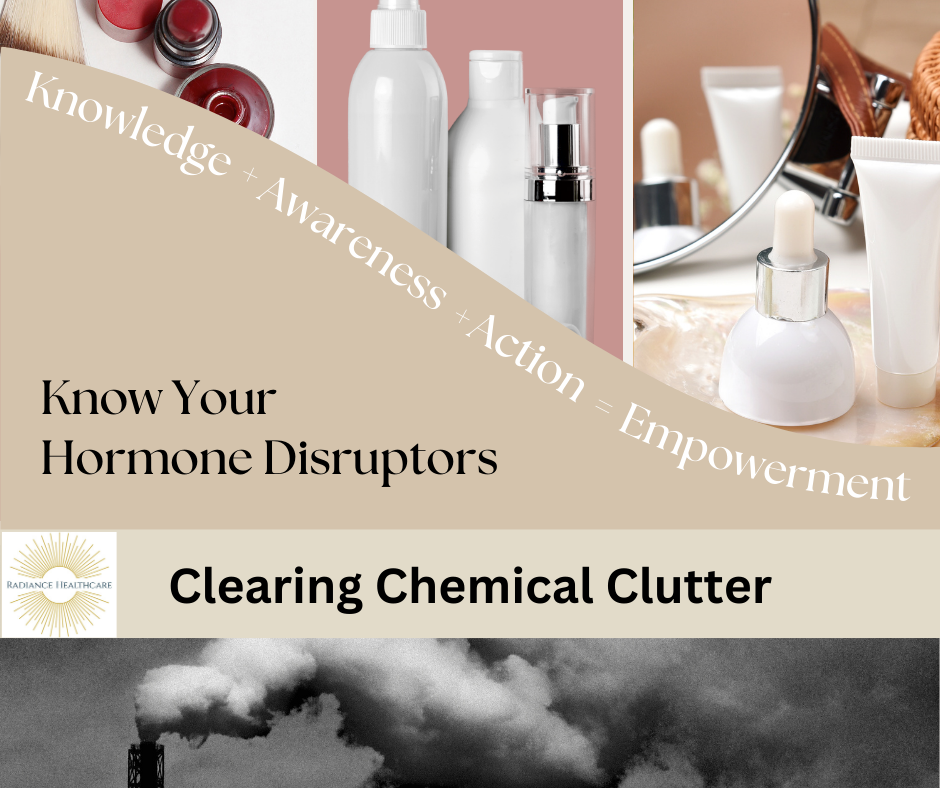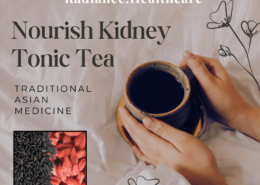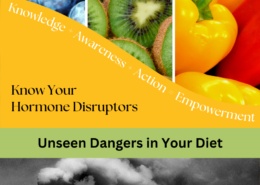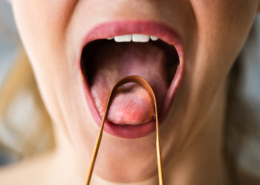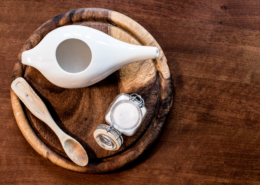Clearing Chemical Clutter
A Guide to Endocrine (Hormone) Disruptors in Personal Care Products
This short guide helps consumers identify and avoid endocrine disruptors commonly found in personal care products, enhancing their ability to protect their hormonal health effectively.
While awareness and cautious selection are effective strategies for reducing future exposure to harmful endocrine disruptors, the significance of actively detoxifying these substances from the body cannot be overstated. Persistent exposure over time can lead to an accumulation of these chemicals, which disrupt hormonal balance and overall health.
At Radiance Healthcare, we emphasize the critical importance of endocrine-disruptor-detox to cleanse the body of these disruptors. Our specialized detox programs are designed to systematically remove these toxins, restoring and optimizing hormonal function and enhancing overall well-being.
Endocrine disruptors found in personal care products; specific chemicals, their health impacts, and typical product examples to aid in recognition and avoidance.
1. Parabens
- Types: Methylparaben, Propylparaben, Butylparaben, Ethylparaben
- Health Impacts: Mimic estrogen, potentially linked to breast cancer and reproductive issues.
- Commonly Found In: Lotions, creams, shampoos, conditioners, makeup.
2. Phthalates
- Types: Diethyl phthalate (DEP), Dibutyl phthalate (DBP), Di(2-ethylhexyl) phthalate (DEHP)
- Health Impacts: Disrupt hormones, linked to reproductive abnormalities, and decreased sperm count.
- Commonly Found In: Nail polish, hair sprays, aftershave lotions, perfumed products.
3. Triclosan
- Health Impacts: Alters hormone regulation, contributes to antibiotic-resistant bacteria.
- Commonly Found In: Antibacterial soaps, deodorants, toothpastes.
4. Oxybenzone
- Health Impacts: Acts like estrogen in the body, associated with altered birth weight.
- Commonly Found In: Sunscreens, moisturizers with SPF, lip balms.
5. Synthetic Fragrances
- Types: Often listed simply as “Fragrance” or “Parfum” on labels, can contain dozens of chemical components including phthalates.
- Health Impacts: Linked to allergies, dermatitis, respiratory distress, potential reproductive effects.
- Commonly Found In: Perfumes, colognes, body washes, lotions, hair products.
6. Formaldehyde and Formaldehyde-Releasing Preservatives
- Types: Quaternium-15, DMDM Hydantoin, Imidazolidinyl Urea, Diazolidinyl Urea
- Health Impacts: Carcinogenic, can trigger allergic reactions, irritant to eyes, skin, and lungs.
- Commonly Found In: Nail polish, hair gel, hair-smoothing products, baby shampoo.
7. Lead and Other Heavy Metals
- Types: Lead, Mercury (often listed as thimerosal), Arsenic
- Health Impacts: Neurotoxin that can lead to behavioral and learning impairments, linked to miscarriages and reduced fertility.
- Commonly Found In: Lipsticks, eyeliner, nail color, whitening toothpaste.
8. Benzophenones
- Types: Benzophenone-1, Benzophenone-3 (Oxybenzone)
- Health Impacts: Hormonal disruption, possible link to cancer.
- Commonly Found In: Sunscreen, nail polish, foundations, baby sunscreens.
9. Ethanolamines
- Types: Diethanolamine (DEA), Triethanolamine (TEA), Monoethanolamine (MEA)
- Health Impacts: Linked to liver tumors, cancer, hormonal and reproductive issues.
- Commonly Found In: Cleansers, soaps, shampoos, hair dyes.
10. Butylated Compounds
- Types: Butylated Hydroxyanisole (BHA), Butylated Hydroxytoluene (BHT)
- Health Impacts: Suspected carcinogens, may cause liver, thyroid, and kidney problems.
- Commonly Found In: Lipsticks, moisturizers, diaper creams, and other cosmetics.
Tips for Minimizing Exposure
-
- Read Labels Carefully: Learn the names of harmful chemicals and check product labels before purchase.
- Choose Certified Organic or Natural Products: These products are less likely to contain harmful synthetic chemicals.
- Use Apps and Resources: Utilize apps like EWG’s Skin Deep database to check product safety ratings.
- DIY Alternatives: Consider making your own personal care products using natural ingredients.

